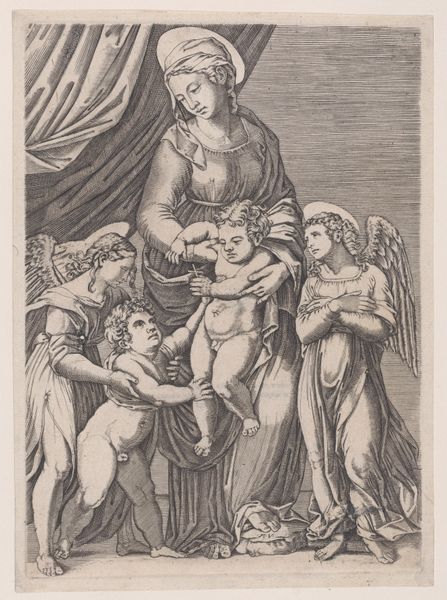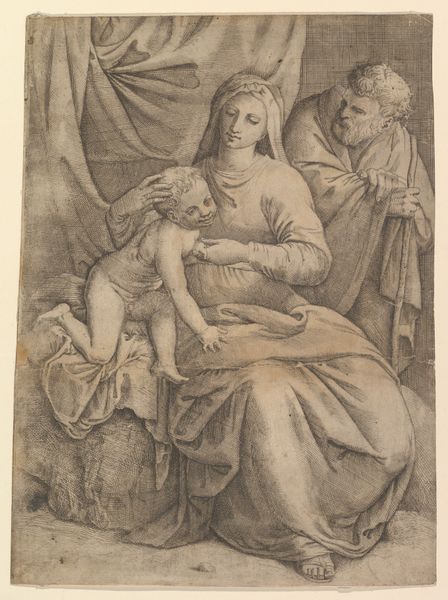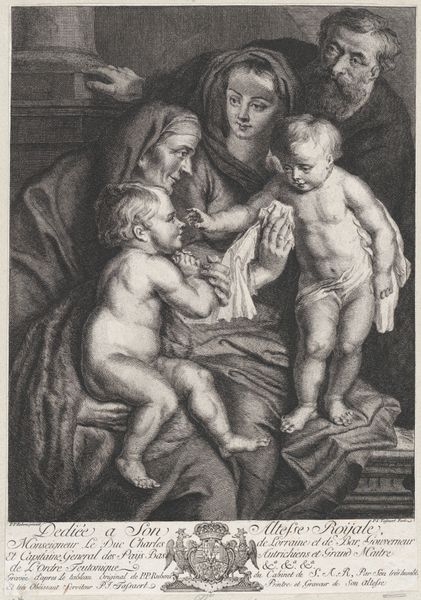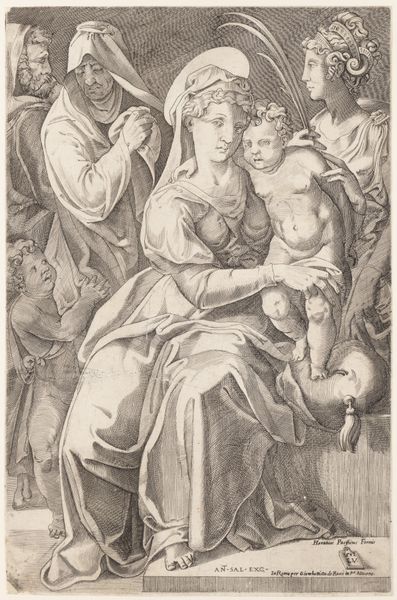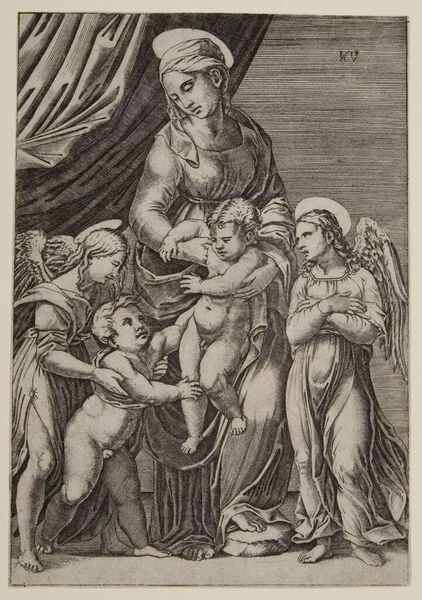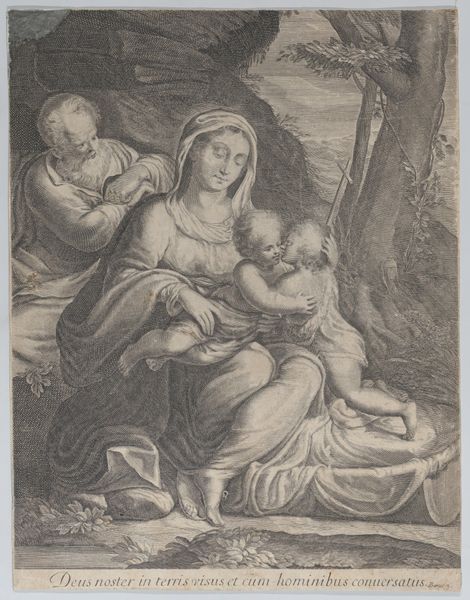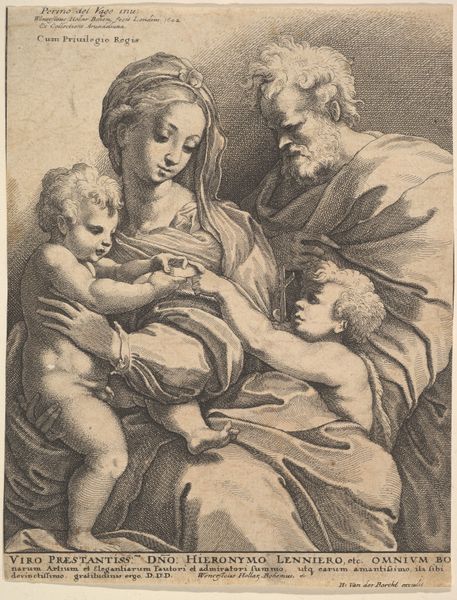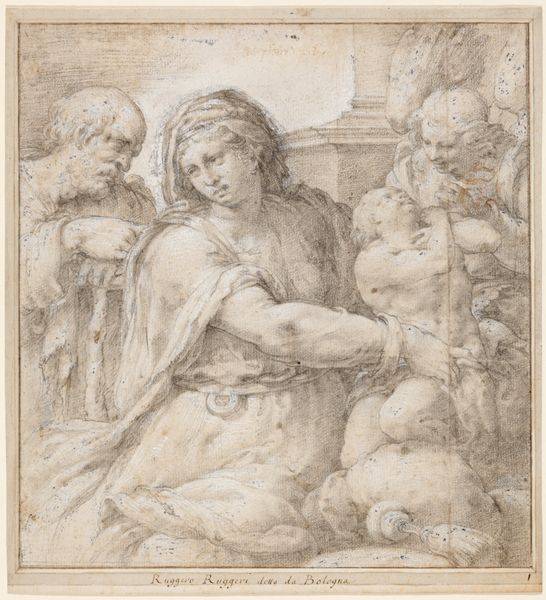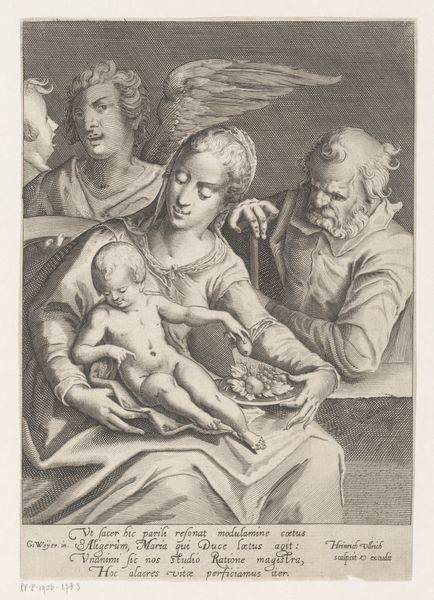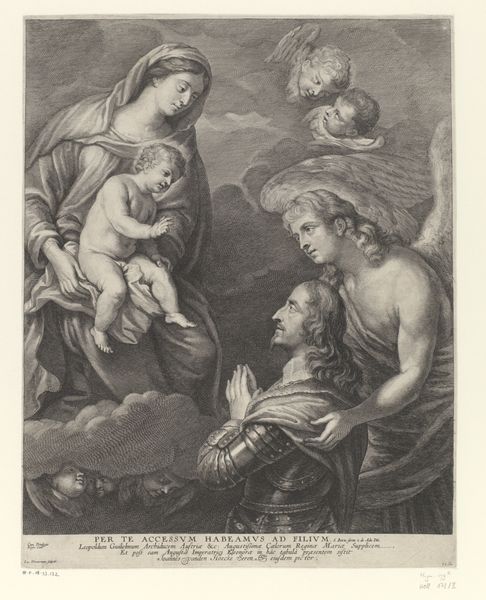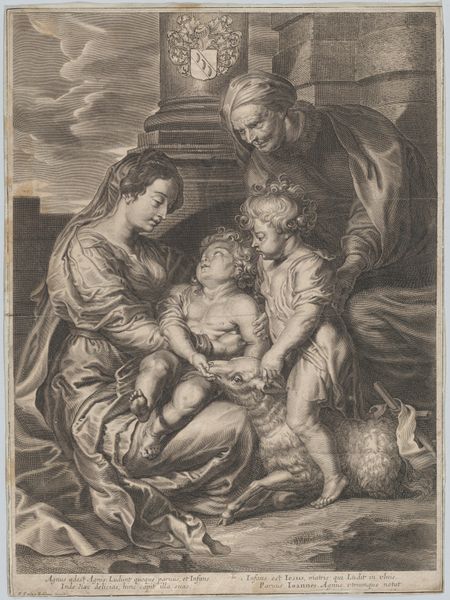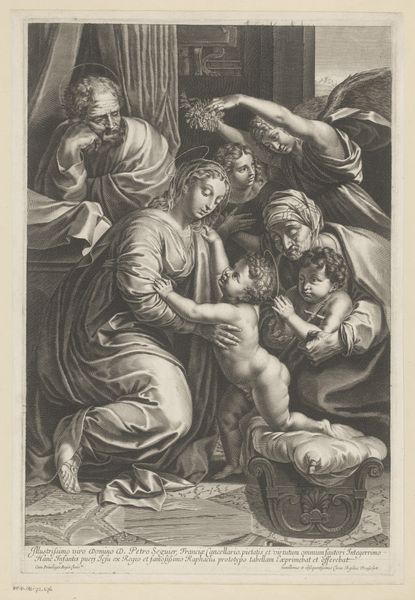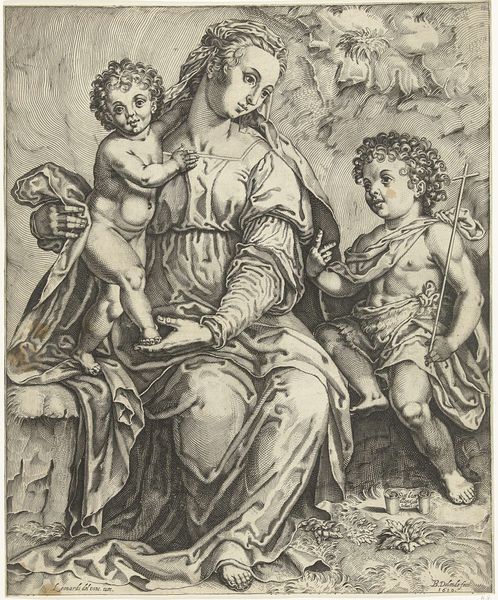
The Virgin, the Infant Christ, Infant Saint John, and Two Angels 1516
0:00
0:00
drawing, print, engraving
#
portrait
#
drawing
# print
#
figuration
#
history-painting
#
italian-renaissance
#
engraving
Dimensions: 9 5/8 x 6 11/16 in. (24.5 x 17.0 cm)
Copyright: Public Domain
Curator: Agostino Veneziano’s engraving, “The Virgin, the Infant Christ, Infant Saint John, and Two Angels,” created around 1516, presents a complex layering of religious iconography and Renaissance aesthetics. The piece is currently housed at the Metropolitan Museum of Art. Editor: Wow. Okay, so, first impression: everybody looks... not thrilled. The light, the way it etches every little line, makes it feel strangely austere, almost clinical, despite the supposed sweetness of the subject. Curator: Interesting observation. It’s true that the expressions are rather solemn. In its historical context, this work reflects a moment where religious art was evolving. We can observe this particular entanglement between sacred and human, where divine figures are increasingly rendered with a naturalism that blurs the line between the celestial and the terrestrial. This relates to broader shifts toward humanism characteristic of the Italian Renaissance. Editor: I get that, intellectually, but look at the details! The fabric is all fussy and ornate, everyone's posed *just so*, like they're desperately trying to hold it all together. The angel on the right looks like she just remembered she left the stove on. And that kid trying to get at Jesus—he's all of us, honestly, just trying to grab some attention. Curator: You've touched upon an intriguing tension in the work. While it embodies humanist aesthetics, there is an effort to stabilize established social hierarchies of religious devotion. The somewhat forced quality, especially evident in the composition, subtly affirms these power dynamics at play. Editor: So it's like, beauty, divinity, and… societal expectation all wrestling for control in one tiny engraving? That's wild. And a little exhausting, to be honest. Still, it’s intriguing to consider how the sacred gets molded through the very human desires for order. Curator: Precisely. Veneziano’s work offers more than just a snapshot of religious idealism. It's a reflection of a society negotiating tradition with emerging ideas about humanity and representation, captured meticulously in ink. Editor: Definitely gives you something to chew on. I walked in thinking "pretty Renaissance picture," and now I'm pondering the entire weight of cultural expectations and the artist's possible anxiety.
Comments
No comments
Be the first to comment and join the conversation on the ultimate creative platform.
